O-RAN IP Filing Trends: Building a Faster Internet
O-RAN, short for Open Radio Access Network, is a concept focusing on the standardization and interoperability of RAN components, including a unified connectivity standard for white-box hardware and open-source software from various vendors. It fulfills the low latency and high-reliability requirements of 5G applications, making it ideal for deployment at the network edge. Several companies from all over the world are innovating in the space to make the most of the many opportunities available here. O-RAN IP filing trends also indicate a rise in innovation in the field and its widening application.
This article discusses O-RAN, its market, innovations in the domain as well as O-RAN IP filing trends.
Table of Contents
What is O-RAN?
Before diving into O-RAN, it is critical to first understand what RAN is. Radio Access Network, also known as traditional RAN, is mainly used for mobile networks containing base stations. It helps mobile devices connect to the core network via radio access technologies, such as 4G and 5G. Traditional RAN is generally subject to only one vendor taking control of all the entities involved.
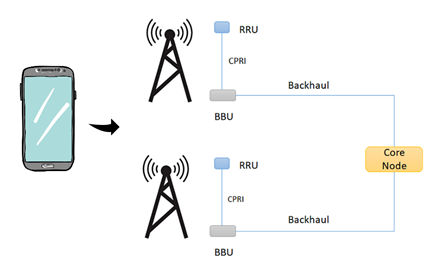
However, O-RAN is quite different from its old version and embodies the idea of standardization. The O-RAN architecture and specifications are built on common standards and focus on alignment with other industry bodies to ensure compatibility. The industry bodies include 3GPP, GSMA, the Telecom Infra Project, ETSI, etc.
In Open-RAN, the RAN functions are divided and can be performed by different vendors. These functions are categorized into O-CU (Central Unit), O-DU (Distributed Unit), O-RU (Remote Unit), and RIC (Radio Intelligent Controller). In a standard RAN architecture, the control plane processing is separated from the user plane processing. Similar is the scenario in Open-RAN.
Figure 2 (below) shows the split of functions in the lower layer, i.e., within the physical layer, where some lower layer functions are carried out in the O-RU and the others in the O-DU. These entities in O-RAN are called E2 nodes/logical nodes.

Here, the O-DU is responsible for hosting RLC, and MAC – the higher physical layer – based on a lower layer functional split. The O-RU is a logical node that hosts the lower physical layer, and the RF processing, based on the lower layer functional split. The O-CU is the node hosting the RRC, SDAP, and PDCP protocols. The O-CU-UP is a logical node that hosts the user-plane part of the PDCP protocol and the SDAP protocol, and the O-CU-CP is the logical node that hosts the RRC and the control-plane part of the PDCP protocol.
Main Building Blocks of O-RAN
Figure 3 (below) shows all the main building blocks of the O-RAN system. Above all the logical nodes mentioned earlier is the Radio Intelligent Controller (RIC), which is divided into two parts:
- Near-Real-Time RIC
- Non-Real-Time RIC
The higher layer – Non-Real-Time RIC – acts as a self-organizing network function, and deals with automation (ML/AI), policy-based guidance of the features in Near-Real-Time RIC and RAN elements, and resources optimization. The Near-Real-Time RIC handles functions like mobility management, traffic steering, interference management, spectrum management, and so forth. The O-DU (in the MAC domain) handles the other real-time radio resource management functions.
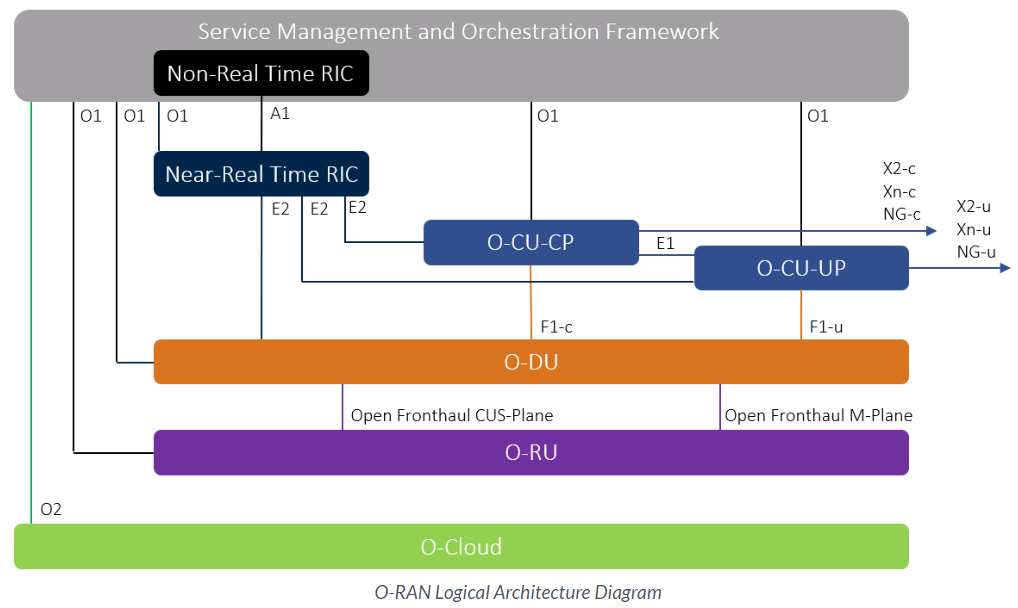
Within the Near-Real-Time RIC, there are X-apps, a set of applications. These applications may be provided by third-party or different vendors; monitoring specific functions, such as interference management, mobility management, etc. Then there is the SMO, the Service Management and Orchestration Framework responsible for controlling the layers below. It can help the Non-Real-Time RIC to maintain the Near-Real-Time RICF.
The O-Cloud in this system is the cloud computing platform of the O-RAN architecture. It consists of the nodes that can host the ORAN functions (i.e., the purple, orange, and blue nodes and the RICs in Figure 3). This entity can help in automated deployment, scaling, and better optimization.
The O-RAN Alliance
The O-RAN alliance was established in 2018 by AT&T, China Mobile, Deutsche Telekom, NTT DOCOMO, and Orange to build RAN solutions based on general-purpose vendor-neutral hardware and software-defined technology. It is a community of mobile operators, vendors, and research & academic institutions operating in the Radio Access Network industry.
General Market Research
Recent market reports mention Alium, a patent pool for licensing in the Open-RAN infrastructure area. MPEG LA and Unified Patents jointly formed it to help patent owners license patents necessary to make a radio unit in the O-RAN space. A total of eleven patent owners have joined Alium’s Open RAN licensing group. The list includes Acer, AT&T Intellectual Property, CableLabs, Comcast, Godo Kaisha IP Bridge 1, Koninklijke Philips, Meta, Mitsubishi Electric, Pantech, SK Telecom, and Verizon Patent and Licensing. More companies are expected to join the pool in the future.
Ericsson, Nokia, and Huawei, along with other significant players like Intel and Qualcomm, have joined the O-RAN space. In the Asia-Pacific region, companies such as Reliance Jio in India are building their 5G network based on the Open RAN technology. Some companies that could be part of the Jio 5G ecosystem include SignalChip, Saankhya Labs, Tejas Networks, Sterlite Technologies, and VVDN Technologies. Rakuten recently launched 4G and 5G commercial services based on Open-RAN architecture in Japan, using multiple vendor radios. The key vendors here include Altiostar, Cisco, Nokia, Intel, Qualcomm, Mavenir, Tech Mahindra, Viavi, Airspan, and so on. On the other side, Vodafone is partnering with more than 20 chip vendors to advance the Open-RAN processors’ development at its European R&D center in Spain. Intel, Qualcomm, Broadcom, ARM, and Lime are among Vodafone’s various partners in this project.
IP Filing Trends in O-RAN
To understand the intellectual property aspect of this technology, Sagacious IP performed an extensive study of the companies that have invested in O-RAN patent filings. Since the O-RAN Alliance was founded in 2018, we have tried to capture patent/IP filing trends since then. Of course, there would be patents available before 2018 that would support the O-RAN technology. However, an immensely extensive study would be required to evaluate all those patent prospects and the subsequent IP filing trends. Here, we have focused on only those patents that could be relevant to the O-RAN space with the priority year 2018 or later.
Figure 4 shows the number of patent families based on priority-year-wise distribution. As can be seen, the number of patent filings in the O-RAN space has increased since 2019. Moreover, the data for the years 2020, 2021, and 2022 would not be very accurate since it takes about 18 months in general for a patent application to be published in the public domain. Figure 5 shows the number of granted and pending patent applications with the priority year 2018 or later.
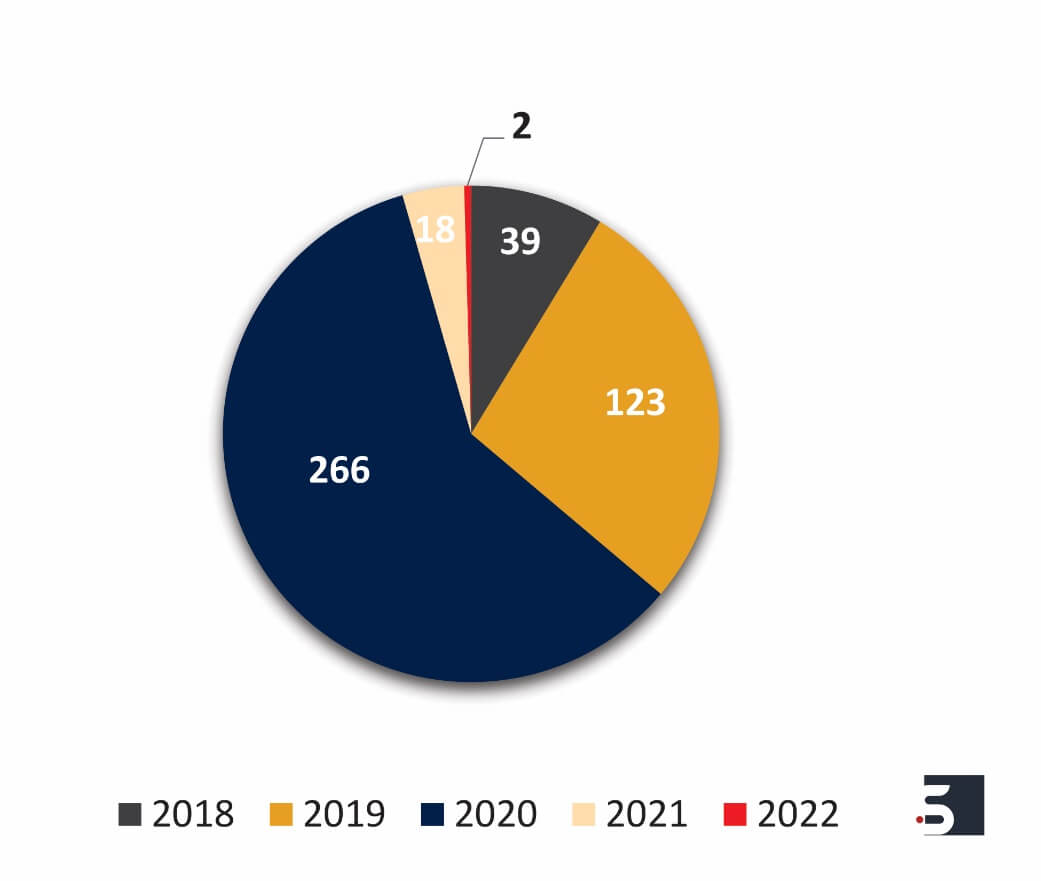
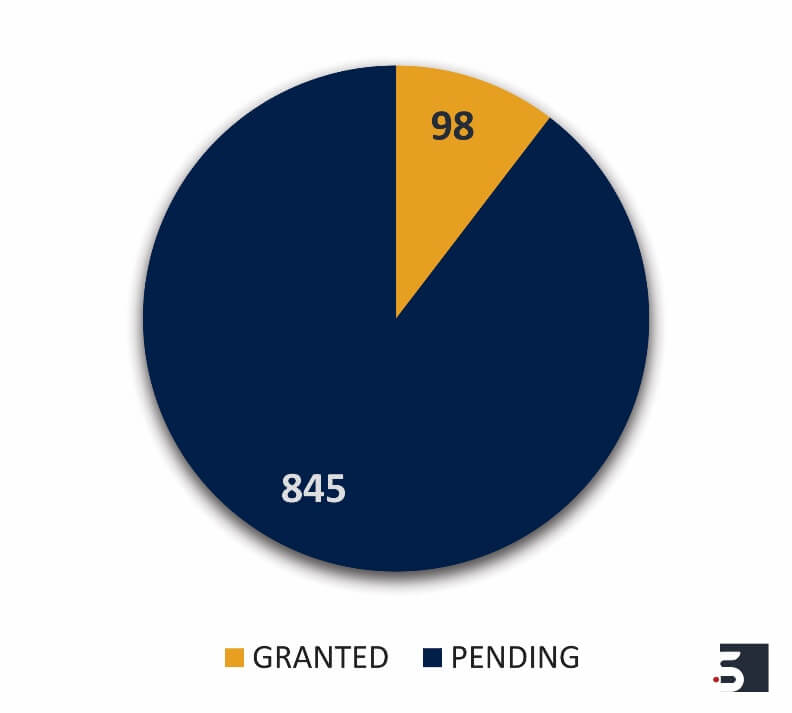
The below bar shows assignee-based filing (top 12) of patent families in the O-RAN space. Samsung, Ericsson, Intel, Qualcomm, Nokia, and Huawei dominate these IP filing trends with the priority year 2018 or later.
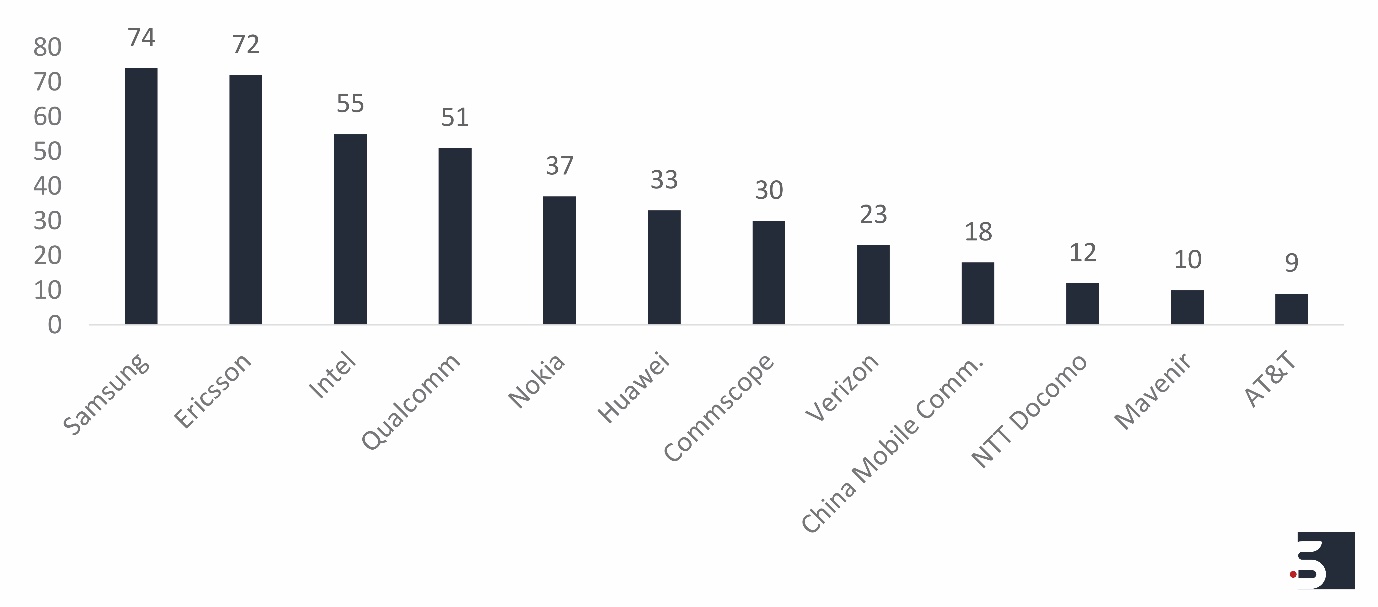
The figure below shows jurisdiction-based filing (top 11) of patents in the O-RAN space. The US, China, Europe, India, Korea, and WIPO dominate the filing for O-RAN patents with the priority year 2018 or later.
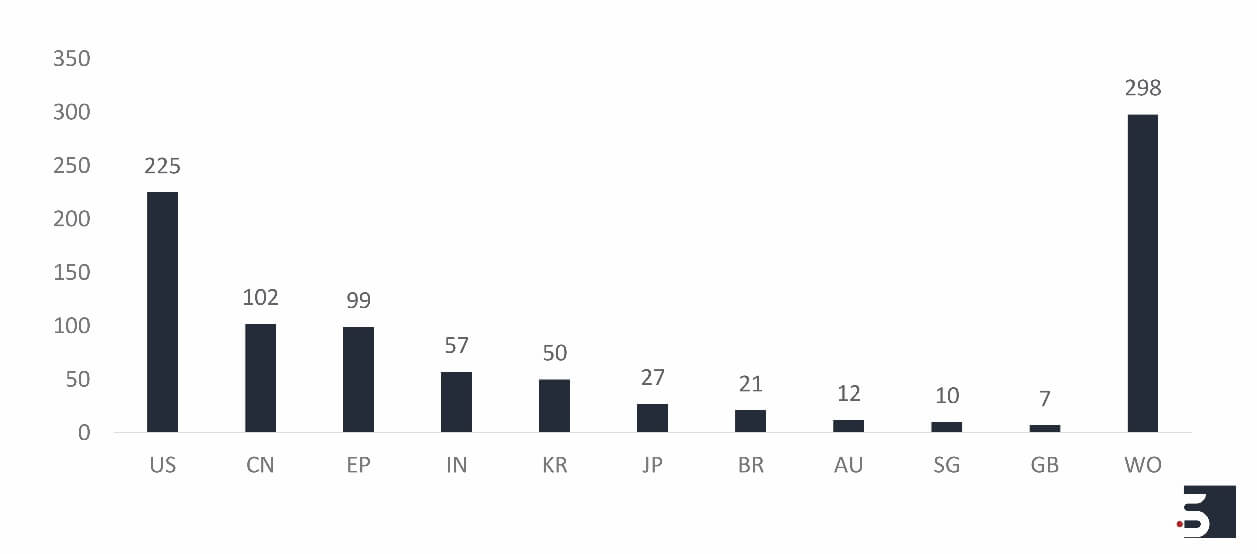
Conclusion
The O-RAN sphere seems to be growing exponentially due to its flexibility to provide interoperability between vendors. With companies such as Nokia, Samsung, and Ericsson, along with various operators such as Orange, AT&T, and Vodafone adopting the technology, it has become significant deployment in the evolving telecom world. Further, a very bright scope can be seen in the direction of standard-essential patent implementation by various operators or vendors supporting or working on this technology.
Sagacious IP, a leading provider of IP research services, helps create patent-worthy inventions. Whether you are innovating in the O-RAN space or any other industry altogether, our team of IP experts can help you with technology scouting, a method of technology forecasting to help achieve goals, and patent licensing & monetization to help generate revenue. Furthermore, our patent landscape search service can help you understand how a technology or industry is evolving.
– Pusparna Pathak (ICT Licensing) and the Editorial Team
Having Queries? Contact Us Now!
"*" indicates required fields




